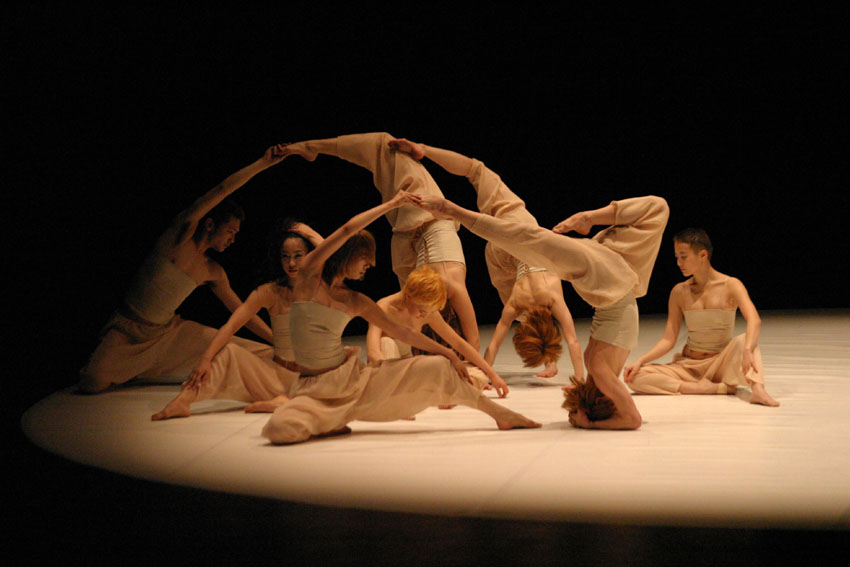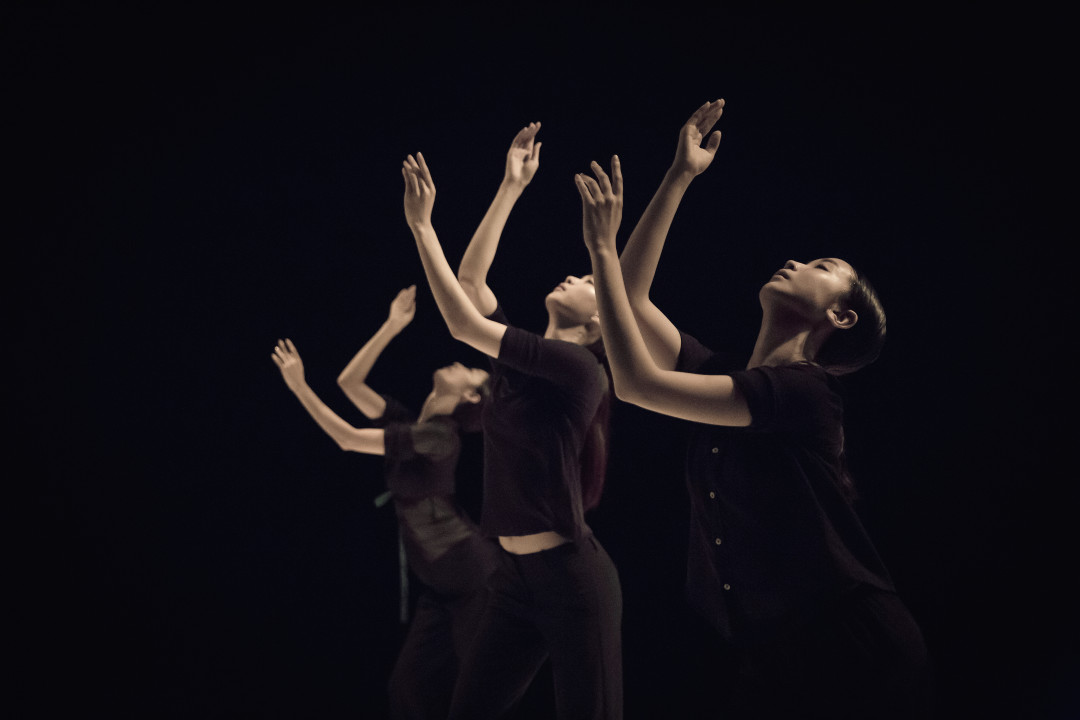Performance Info
Performance Info
About CompanySungsoo Ahn Pick-up Group was first founded in New York by Ahn Sungsoo, who majored in journalism and broadcasting and film studies before becoming a choreographer. The company was later reestablished in Seoul when he returned to Korea in 1998. Ahn has staged numerous dance performances to great acclaim, and has received many awards at home and abroad, making it difficult to believe his late start as a dancer. Meanwhile, the group has created contemporary works based on ballet and modern dance and steadily presents high-quality works through elaborate choreography and logical movement analysis.
IntervieweeArtistic Director Sung Ahn, Sung soo
Dancer Lee, Ju hee
Interview
Q: You founded the Sungsoo Ahn Pick-up Group while studying in the US and did creative work there. Upon returning to Korea, you explored in-depth choreographic possibilities with your “Bolero Series” for over a decade. Tell us about “Bolero.”
Ahn Sungsoo: The Bolero Series first began when 8 dancers gathered to perform “8 days of trip.” I learned a lot about dance composition in the process of its creation. From there, I started making variations of the work. “Bolero 2005” was created by transposing the musical playfulness of Bolero’s melody into movement, and is the most stable and balanced work of the series. We experimented with this framework and created two new choreographies: “Bolero 2006–Ghost Story” and “Bolero –The Story of Kim’s.” Later, we discarded the framework but retained the music, resulting in “Mating Dance.” We made 11 versions of Bolero in all before ending the series. Ravel’s ”Bolero” is a simple composition in which the rhythm and melody repeat themselves, with new instruments added in layers. After one cycle is completed, it’s interesting to discover how it connects to the next with slight variations. We tried to recreate this with dance.
Lee Ju-hee: As one of the participating dancers, I was able to experience the unending repetition from beginning to end. The dance structure is like a skein of yard. It was fascinating how our bodies intertwined without unraveling. “Bolero 2005” is a landmark work that was nominated for the Benois de la Danse, the “Ballet Oscar” in the choreography category.
Q: Tell us about “Rose (Rite of Spring)”, which was inspired by Igor Stravinsky’s “The Rite of Spring.”Ahn Sungsoo: My five favorite dancers and I studied Stravinsky’s “The Rite of Spring” for two entire years. We all ended up memorizing the music. I modified the story because
I thought it was more rational for a man to be the sacrificial victim, rather than a woman.
Lee Ju-hee: Stravinsky’s “The Rite of Spring” is divided into 14 sections and its music is very difficult for dancers. Miss one beat, and the movement and visual effects become unsynchronized. It took us a lot of time to memorize all 14 segments. While the choreographer created “Rose,” he got inspiration from tarot cards readings. Each section has symbolic movements that have their motif in a tarot card. For example, the Hierophant card has a man wearing a hat and carrying a cross and a cane. We had our Hierophant draw a cross on his chest, throw off his hat, stick his serpent-headed cane into a pyramid and enter it. We also did meaningful interpretations using symbols from the Chariot and the High Priestess cards.
Q: Tell us also about “Immixture,” which mixes modern movement and traditional dance.Ahn Sungsoo: “Immixture” was commissioned to commemorate the 130th anniversary of diplomatic relations between Korean and France and had its premiere at the Théâtre National de Chaillot in Paris. Chaillot’s programmer asked us to create a dance, and we agreed upon the condition that he come to Korea every year to watch and review our performances. It took 4 years to produce “Immixture.” Its music includes Korean art songs and minstrel music (“Namsadang Nori”), Turkish percussion instruments, Schumann’s violin concerto, and Eminem rap. The dance is a mixture of traditional Korean movements, modern dancing, and hip hop. The upper body uses Korean dance techniques but the lower body uses ballet techniques. This dance was performed abroad many times, and is personally very meaningful to me.
Lee Ju-hee: “Immixture” is a requiem that placates departed souls with song and dance. In any country, there are memories of war and anguish. Whenever we perform abroad, we look up that country’s history and think of soothing their pains of their past. There are moments during a performance when we get very emotional and the emotion is always different. I’ve performed “Immixture” countless times but I still get excited each time.
Q: In your choreography, I feel your absolute respect for music. Your musical spectrum is extremely broad, encompassing classical and Korean traditional music. What do you consider most important when choosing music for your work?Ahn Sungsoo: In my choreography, the music becomes the framework. When I create, I always structure my work around a motif and the music provides the foundation. To me, Western and Korean music are all one and the same. I remember presenting “Altar” with the National Dance Company of Korea. We used the overture from “Tristan and Isolde” together with sinawi (traditional Korean ensemble music that accompanies shaman rites), and the two blended beautifully. Because the dancers and I had complete faith in each other, we were able to use the music effectively for expression.
Q: I’m curious about the creative method you use in your choreography.Ahn Sungsoo: In “Traces of Black Sand,” I made 13 short movements. If there are 10 movements in each section, that makes 130 movements in all. These little movements are like words, and I combine these words to make sentences. Dance is like a composition. Because I majored in film, I make a dance like I would a movie. I film that day’s practice and then edit the movements until all the connections are smoothened out. That’s my creative process.
Lee Ju-hee: All the movements must be inside a dancer’s head. If there are phrases a, b, c, and d, Mr. Ahn will tell us to do d-b-a on one day, and c-b-a on another. He changes the order until he likes what he sees. He gets inspiration from diverse sources, such as his young son’s actions or even emoticons. There is humor and wit as well as depth in his works.
Q: I was very impressed by your rhythmic balance between the harmony and solemnity of Korean dance and the smooth movements reminiscent of ballet. What factors do you consider when creating such dance?Ahn Sungsoo: There must be a sense of rhythm, and the position of the body and face must be very precise. I pursue neutral ballet, in which maintaining a neutral position is essential. The focus of choreography is to make people happy. My choreography’s tempo is on the fast side, which wears dancers out. Yet they love to participate in my projects because my dances make them feel happy. My choreography is like a treasure map that provides precise directions and musical guidelines so that the dancers know exactly where to go to find the treasure. The dancers feel joy in the process of hunting for the treasure.
Q: You have a special partnership with Korea’s national dance companies. As the guest choreographer for the Korean National Ballet and the National Dance Company of Korea, you proved yourself to be adept at crossing boundaries and genres. And as the Artistic Director of the Korean National Contemporary Dance Company, your choreographic skills have gained even further reputation.Ahn Sungsoo: I believe there are no boundaries in creative work. When I choreographed “Rise and Fall of the City of Mahagonny” for the Korea National Opera, the method I used is the same as the one I use for dance. Opera is a compound art performed on a stage with music, singers, dancers, designers, and musicians. It can’t be done alone. Everyone works together to create an opera. The same holds true for dance. I didn’t learn dance in Korea. In the United States, where I studied there was no dichotomy between modern dance and ballet. Because of this background, Korean dance, modern dance, and contemporary dance are all one and the same to me since they are all done by the human body. Likewise, all creative activities are one and the same.
Lee Ju-hee: All body language is the same. Because the movements are made by the body, I also see no borders between Korean dance, ballet, and modern dance.
Production Details
Major Productions〈Immixture〉
〈Traces of Black Sand〉
〈Rose(Rite of Spring)〉
〈Aufstieg und Fall der Stadt Mahagonny〉
〈8days of trip〉
〈Beyond My Control〉
〈Bolero〉 series
〈Mating Dance〉
〈Altar〉
- 2015~2016 Co-production with Theatre National de Chaillot ‘Immixture’, France
- 2015 Verkatehdas, Co-production with WHS ‘The Swan of Tuonela, Finland
- 2014 CINARS Showcase, Canada
- 2013 ‘Kore-A-Moves 2013’ European Tour in 7cities and 4 European countries
- 2012 Helsinki Festival, Co-production with WHS ‘Double exposure’, Finland
- 2010 ‘Kore-A-Moves 2010’ European Tour in 6 cities and 4 countries
- 2006 BENOIS DE LA DANSE, Russia
-
Production Details
- Director
Ahn, Sung soo
Sungsoo Ahn Pick-up Group was first founded in New York by Ahn Sungsoo, who majored in journalism and broadcasting and film studies before becoming a choreographer. The company was later reestablished in Seoul when he returned to Korea in 1998. Ahn has staged numerous dance performances to great acclaim, and has received many awards at home and abroad, making it difficult to believe his late start as a dancer. Most notably, in 2006, “Bolero” was nominated as a finalist at the Benois de la Danse, one of the world’s most prestigious dance competitions.
Ahn scouts out dancers for his company from diverse backgrounds, including traditional Korean dance, K-Pop dance and hip hop, training them in ballet techniques employing the concept of “body neutralization (a state in which dancers are prepared to move freely).” In recent years Ahn has explored the beauty uncovered through the organic blending of Eastern and Western techniques and perspectives.










 PREV
PREV











